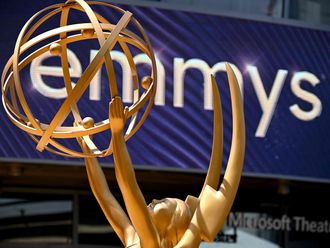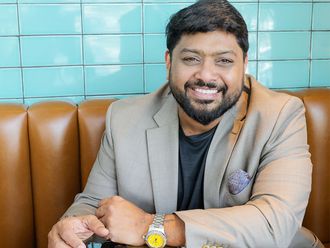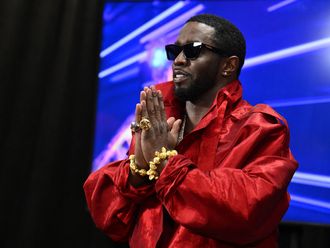Emilio Estevez, son of actor Martin Sheen and brother to Charlie Sheen, rose to fame as a member of the 1980s "Brat Pack" of young actors in such films as The Breakfast Club and St Elmo's Fire.
He turned to writing and directing in the late '80s and has worked directly with his father and brother several times.
Now, in perhaps his most personal film, Estevez directs his father in The Way. The movie, about a man's decision to trek Spain's El Camino de Santiago (the Way of St James) after his estranged son (played by Estevez) unexpectedly dies on the same nearly 805-kilometre-long journey, is a meditation on healing and spirituality.
What led to the two pairing on a film? Sheen's insistence that his son write a project for him. Father and son answered questions from Los Angeles Times readers. Here are highlights:
What was your inspiration for this film?
Estevez: It was inspired by my son, who has been living in Spain for the past eight years. He met his wife on the Camino. My grandfather was born near Santiago de Compestela, where the film ends. I was inspired by Spain, my Spanish roots and my father's desire to make a film there.
Emilio, once you decided that you wanted to tell this story, what was your process in writing the script?
Estevez: I wrote the lead character specifically for Martin. I met Deborah Kara Unger while I was writing this screenplay, and I was inspired to craft the role around her. The Dutch character was inspired by a Dutch friend of mine who I make wine with. The character of Jack was inspired by writer Jack Hitt, who wrote a book about the Camino, called Off the Road.
Emilio, the idea of picking up fellow travellers on a personal journey in this film has been compared to The Wizard of Oz. Was that intentional?
Estevez: Definitely. The tornado in The Way is the death of Tom's son, which picks him up and carries him to Spain.
It was always my intention that Joost, the Dutchman, would serve as our cowardly lion; Sarah, the Canadian, was looking for her heart; and Jack in search of his brain. However, I kept this to myself until I chose the location to introduce the Irishman Jack. When the crew saw that it was a field of haystacks, our lovely production designer, Victor, quietly asked me, "Emilio, are we telling a tale with this film?" I could only smile at him.
What was the biggest challenge on set?
Estevez: Making our shooting schedule! We filmed along the actual Camino de Santiago in sequence and had 40 days. The film was decidedly low-tech, with a very small crew, many of whom were doing multiple jobs.
Did you have to get special permission from the Cathedral in Santiago to swing the Botafumeiro?
Estevez: Yes. It was very difficult to get permission by the church officials to film inside the cathedral. In fact, permission was not granted until 48 hours before filming. I had even offered up a rewrite of the ending of the script in the event that we were barred. I asked every member of the crew to light candles and pray, even the agnostics and atheists. Upon final viewing of the film, the archbishop in Santiago was pleased and called the film "a gift".
Martin, were you sober during the drunk scene?
Sheen: Ha ha, it is a testament to my skill that you were uncertain, but then again I've had a lot of practice over the years. Thankfully, however, I have not had a drink in 22 years, with exception of accepting the wine at Communion.
What one message do you want viewers to take away from this film?
Sheen: I would hope that they would be inspired to explore the possibility of transcendence with an honest search, to unite the will of the spirit to the work of the flesh, because that is the central purpose of every pilgrimage.










